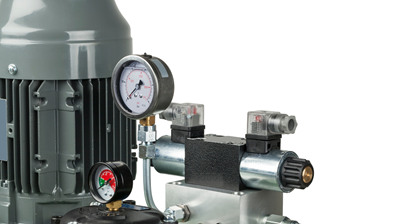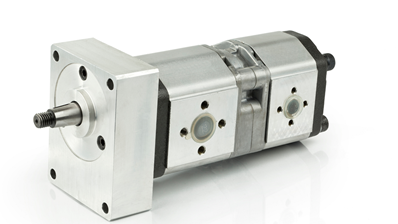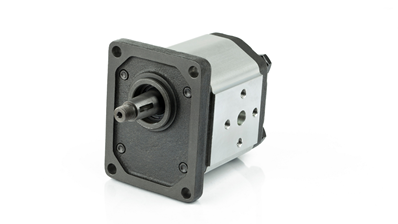Hydraulic Pumps in Modern Times
 Have you ever considered how much harder your work would be without the help of hydraulic pumps and valves? Without hydraulic pumps in modern times, you would have to perform many tasks by hand or manually. Imagine lifting a two-ton object manually using a series of pulleys or digging a hole using a shovel!
Have you ever considered how much harder your work would be without the help of hydraulic pumps and valves? Without hydraulic pumps in modern times, you would have to perform many tasks by hand or manually. Imagine lifting a two-ton object manually using a series of pulleys or digging a hole using a shovel!
Fortunately, thanks to modern hydraulic systems, you do not have to worry about accomplishing such tasks. However, several hundred years ago, things were very different before the invention of modern hydraulics.
A Brief History of Hydraulics
The use of hydraulics can be traced back to the ancient civilisations of Greece, Persia, China, Rome, and Sri Lanka. These early civilisations were inspired by the Egyptians’ earlier uses of water power. Whilst most of their inventions used water hydraulics, they still helped fuel the advances in fluid power during the 1600s to late 1800s.
1
One of the most influential people to help advance hydraulics was Blaise Pascal. He studied and developed several hydraulic fluid principles, which we know today as Pascal’s Law.
2
Daniel Bernoulli and his study of fluid dynamics later used Pascal’s principles, resulting in the creation of Bernoulli’s Principle. While Bernoulli was the one who figured out that as flow speed increases, pressure decreases, it was Leonhard Euler who refined Bernoulli’s efforts and created Bernoulli’s equation in 1752, which we still use today.
3
Bernoulli’s and Euler’s contributions further paved the way for another inventor, Joseph Bramah. Bramah invented the hydraulic press. It relied on Pascal’s Law that the pressure of a closed fluid system remains constant. It also applied Bernoulli’s Principle.
Another contributor to the advancement of hydraulics was William Armstrong. He invented the first hydraulic accumulators in 1846.
6
How Hydraulics Continued to Evolve

Many of the advances made during the 1800s and 1900s started to incorporate hydraulic systems in some manner. During the last hundred years, two specific hydraulic pump systems evolved: the hydraulic piston pump and the hydraulic
gear pump.
Hydraulic gear pumps are generally used more often because they provide several benefits over piston pumps:
- Ease of Use
- Low Cost
- Delivery of a Constant Fixed Displacement
- Ease of Adaptation
- Ease of Customisation
In addition, adding valve control devices makes it possible to mimic some of the piston pumps’ features without the added cost.
Hydraulic piston pumps are better suited to applications with greater operating pressure. Gear pumps are not always capable of producing the necessary operating pressure, so piston pumps must be used. Furthermore,
piston pumps are used in systems requiring a variable flow rate and in systems with torque and power limitations.
Who Invented Modern Digital Hydraulics?
In 1999, Matti Linjama from the Tampere University of Technology developed the concept of digital hydraulics. He theorised that computer-controlled digital valves could be used in place of current hydraulic valves to achieve the same desired output, reducing the number of valves required.
7
The first working digital hydraulic systems started to be produced in 2009. These systems were built to address inefficiencies found in modern hydraulic manufacturing equipment.
It was not long before other industries took notice, including the automotive industry. Today, digital hydraulic systems are used for anti-lock brakes, electric motors, stability control systems, and various driver-assisted features like emergency braking and variable cruise control.
How Digital Hydraulics Helped Create Digital Displacement® Technology
In 1994, Edinburgh Wave Power Group created Artemis Intelligent Power. Around the same time as Matti Linjama was developing digital hydraulics, Artemis Intelligent Power was working on the concept of Digital Displacement® Technology.
This technology theorised that it could be possible to enable and disable moving hydraulic cylinders in real-time using computer technologies, ultra-fast control valves, and hydraulic pumps.
There are “smart” hydraulic engines available that do exactly what Artemis initially believed possible. Their invention improves the efficiency of hydraulic engines and makes it possible to do things conventional hydraulic engines have not been able to do.
8
The Future of Hydraulics in Modern Times
Hydraulic pumps in modern times and the future look very favourable. In the not-so-distant future, traditional hydraulic pumps, including fixed displacement pumps, vane pumps, and variable displacement pumps, could become obsolete.
Part of the reason digital hydraulics are expected to continue to grow and expand are the numerous benefits gained by using digital pumps, valves, and systems, which include:
- Performing functions much faster than manually controlled systems
- Having more energy efficiency
- Requiring less maintenance
- Continuing to be operated even when a digital valve has failed
- Providing improved operational efficiency, increasing overall system precision, performance, and output
- Costing less to manufacture and produce
- Implementing digital hydraulics costing less than conventional systems
The Best Selection of Hydraulic Pumps and Motors

Whether you are still using conventional hydraulic systems or are interested in moving to digital solutions, White House Products, Ltd. is here to help. We provide access to one of the largest inventories of hydraulic gear pumps, piston pumps, motors, valves, and related components, as well as the latest digital hydraulic technologies.
We can also help you custom design and
build a hydraulic system solution to your specific needs and requirements. For further assistance in sourcing the right hydraulic pumps, valves, motors, and more, please feel free to
contact us directly at +44 (0) 1475 742500 today.
Back to blog posts